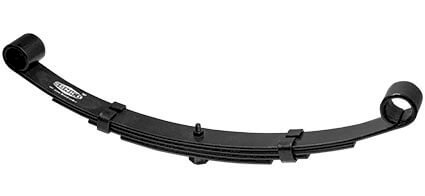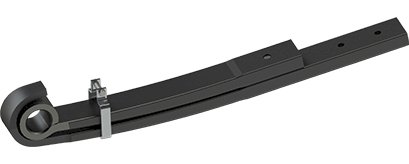Everything you needed to know about the conventional leaf springs
Also known as the multi leaf springs, they are by far some of the oldest existing types of leaf springs that are used all over the world.

Every vehicle has a suspension system and it is important to use tools that can hold the suspension system intact while the vehicle is being driven on the road. Leaf springs have been the standard mechanism for maintaining the balance of the suspension system so that there is no excess pressure on the wheel base. The leaf springs have been in use for many decades now and this is why they are regarded as the standard option when it comes to ensuring smooth running of the vehicle suspension system. Over the years, different types of leaf springs have been designed and developed and they all perform their central functions in a myriad of ways. One of the most commonly used types of leaf springs is the conventional leaf springs. Also known as the multi leaf springs, they are by far some of the oldest existing types of leaf springs that are used all over the world.
 The conventional leaf spring are created from spring leaves that have got constant cross sections. These leaf springs are primarily used in different types of agricultural vehicles, construction vehicles and on the rear axles of the modern pickup vans. They have a rather robust construction and their inherent design makes it possible for people to get the leaf springs to be repaired quickly and cheaply. When you use them for a vehicle, you do not need to get additional stabilizers for the vehicle. This definitely makes them rather easy to work with. Over the years, it has been found that the conventional leaf springs can deliver excellent output for a broad range of vehicles such as railway wagons and large trucks.
The conventional leaf spring are created from spring leaves that have got constant cross sections. These leaf springs are primarily used in different types of agricultural vehicles, construction vehicles and on the rear axles of the modern pickup vans. They have a rather robust construction and their inherent design makes it possible for people to get the leaf springs to be repaired quickly and cheaply. When you use them for a vehicle, you do not need to get additional stabilizers for the vehicle. This definitely makes them rather easy to work with. Over the years, it has been found that the conventional leaf springs can deliver excellent output for a broad range of vehicles such as railway wagons and large trucks.
The structure of the conventional leaf springs is made up of several flat plates with semi-elliptical shapes. These flat plates make up their leaves. The leaf that is located at the top is characterized by its maximum length and is referred to as the master leaf. The length of the leaves decreases gradually from top leaf to bottom leaf. These leaf springs are also provided with some additional full length leaves so that they are able to handle the weight of the suspension system in a better way. The design and engineering of these leaf springs make it possible for them to bear a substantial amount of stress and load for a long time. Each of the leaves is crafted in such a manner that they can offer support to the leaf right above it as well as below it.
While it is true that the conventional leaf springs offer a wide range of distinct advantages to the users, they also come with some limitations of their own. For instance, they do not work well when users are looking for some lightweight leaf springs. The less specific strength and modulus of these leaf springs may limit their user case. The conventional leaf springs made out of steel may have limited damping capacity. Such limitations often lead users to opt for leaf springs that are made out of composite materials.





































